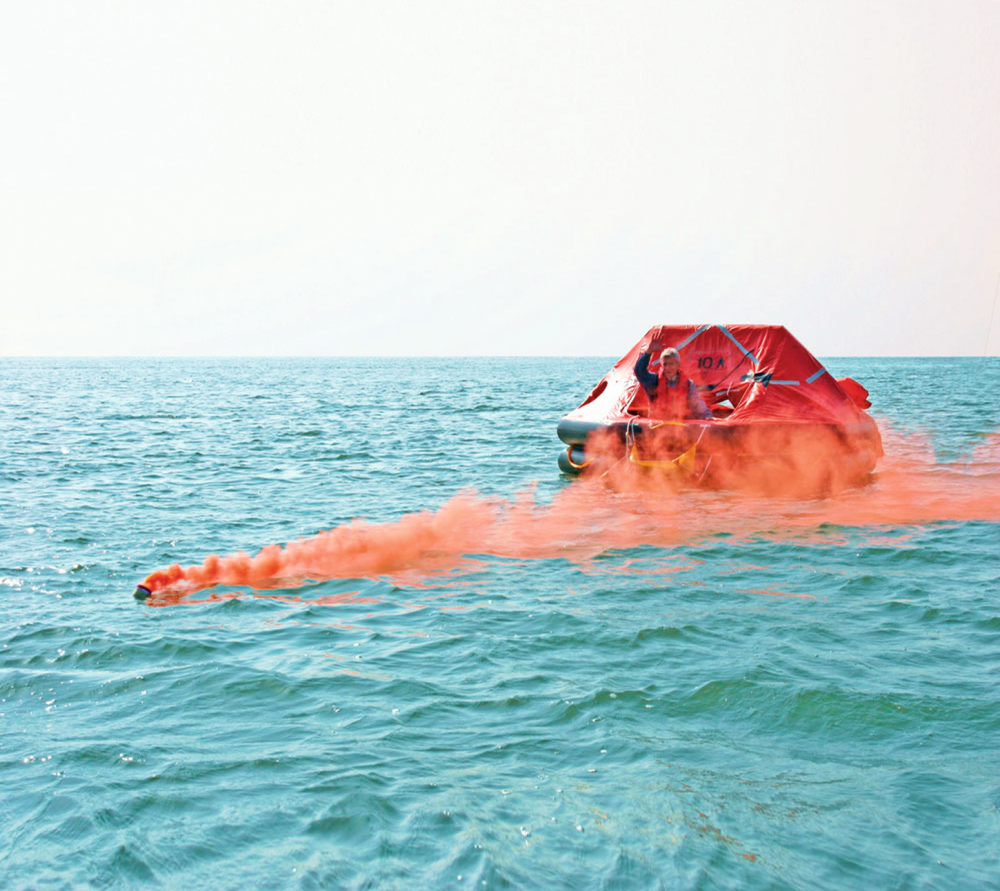Blog Post
What are the Types of Pyrotechnics in Lifeboat?
Posted By: Harsh Bamnolia
Posted On : 20-Jan-2025

What are the Types of Pyrotechnics in Lifeboat?
Pyrotechnic distress signals are mandatory safety equipment on all lifeboats, ensuring that vessels in distress can signal for help.
Understanding the types of pyrotechnics in lifeboat is crucial for maritime safety and compliance with SOLAS (Safety of Life at Sea) regulations.
These distress signals play a key role in emergency situations, helping rescue teams locate stranded crew members efficiently.
In this guide, we will explore the types of pyrotechnics in lifeboat, their purpose, and their importance in maritime safety.
Types of Pyrotechnics in Lifeboat
Each lifeboat pyrotechnic device serves a unique purpose based on the nature of the emergency and visibility conditions. The four primary types of pyrotechnics used in lifeboats include:
1. Hand Flares
Hand flares are one of the most commonly used distress signals on lifeboats. They produce a bright red flame, which can be seen from a significant distance.
Features of Hand Flares:
High-intensity flame: Hand flares burn at 15,000 candela, making them visible from miles away.
Short-range signaling: They are ideal for distress signals when rescue teams are within close proximity.
Burn time: Most hand flares last for at least 60 seconds to provide ample time for visibility.
2. Parachute Rocket Flares
Parachute rocket flares are used to send distress signals over long distances. They reach an altitude of 350 meters before deploying a bright red flare that stays suspended in the air for an extended period.
Features of Parachute Rocket Flares:
Long-range visibility: These flares burn at 30,000 candela and are visible from aircraft, helicopters, and distant vessels.
Sustained burn time: The flare stays aloft for at least 40 seconds, maximizing visibility.
High-altitude deployment: Ensures that the distress signal can be seen from a far distance, increasing the chances of a swift rescue.
3. Buoyant Smoke Signals
Buoyant smoke signals are specifically designed for daytime distress signaling. They emit dense orange smoke, making them highly visible from search-and-rescue aircraft and nearby ships.
Features of Buoyant Smoke Signals:
Strong visibility during the day: The bright orange smoke can be seen from a great distance, even in overcast conditions.
Extended burn time: Produces thick smoke for at least 3 minutes, ensuring prolonged visibility.
Easy handling: They are lightweight, compact, and float on water without tipping over.
4. Light Smoke Signals (MOB Signals)
The Man Overboard (MOB) smoke signals provide both daytime and nighttime distress signaling. They are used in man-overboard situations to mark a position in the water.
Features of MOB Signals:
Dual-function distress signal: Combines dense orange smoke for day signaling with a strong LED light for night visibility.
Continuous operation: The light lasts for at least 2 hours, while the smoke signal functions for 15 minutes.
Resistant to harsh marine conditions: Designed for extreme weather conditions, making it reliable in emergencies.
Importance of Pyrotechnics in Lifeboat
Now that we understand the types of pyrotechnics in lifeboat, let’s explore why these distress signals are essential for maritime safety.
1. Immediate Emergency Response
Lifeboat pyrotechnics ensure that emergency distress calls are immediately visible to rescue teams. Whether it’s a fire onboard, collision, or capsizing, distress signals can be activated instantly.
2. Compliance with Maritime Safety Regulations
According to SOLAS Chapter III, all lifeboats must be equipped with distress signals to ensure compliance with international safety regulations. Regular maintenance and inspection of these pyrotechnics are essential.
3. Effective in All Weather Conditions
Each type of lifeboat pyrotechnic is designed to perform in various environmental conditions:
Hand flares and parachute rocket flares are used during low-light or nighttime emergencies.
Buoyant smoke signals and MOB signals are effective during daylight rescue operations.
4. Enhances Search-and-Rescue Efficiency
Using the right type of pyrotechnic device in an emergency can reduce rescue response time. A well-placed parachute flare or smoke signal ensures that search-and-rescue teams locate distressed vessels faster.
How to Use Pyrotechnic Signals in Lifeboat
Proper handling of lifeboat pyrotechnics is essential for their safe and effective operation. Here are some key guidelines:
1. Read the Manufacturer’s Instructions
Each distress signal comes with specific usage instructions. Crew members should be trained in handling and deploying pyrotechnics safely.
2. Check for Expiry Dates
Pyrotechnic distress signals degrade over time. It is crucial to replace expired hand flares, rocket parachutes, and smoke signals regularly.
3. Store in a Dry & Accessible Location
Pyrotechnics should be kept in waterproof containers and stored in a location that is easily accessible in case of an emergency.
4. Use as Per Visibility Conditions
Hand flares: Use when a rescue vessel is in close range.
Parachute rockets: Deploy for long-range distress signaling.
Smoke signals: Activate during daytime rescue scenarios.
MOB signals: Use when marking a man-overboard position.
Reliable Pyrotechnic Supplies by Marinetech
At Marinetech Safety & Shipping Corporation, we provide high-quality SOLAS-approved pyrotechnic distress signals that ensure maritime safety. Our range of products includes:
Hand Flares: Compact, highly visible, and ideal for short-range distress signaling.
Parachute Rocket Flares: Designed for long-distance emergency alerts.
Buoyant Smoke Signals: Perfect for daytime search-and-rescue operations.
Light Smoke Signals (MOB Signals): Essential for marking overboard crew members.
For the best maritime pyrotechnics, visit: https://marinetechss.com/supplies/pyrotechnics.
Conclusion
Understanding the types of pyrotechnics in lifeboat is crucial for ensuring maritime safety. These distress signals enable stranded vessels and crew members to communicate their location and emergency status to rescue teams efficiently.
Each lifeboat pyrotechnic device plays a specific role in distress signaling:
Hand flares for short-range emergency alerts.
Parachute rocket flares for long-distance distress communication.
Buoyant smoke signals for marking distress positions in daylight.
MOB smoke signals for enhanced visibility of man-overboard situations.
At Marinetech Safety & Shipping Corporation, we specialize in SOLAS-compliant pyrotechnics designed for maximum visibility and reliability. To ensure your vessel is fully equipped with high-quality distress signals, visit: https://marinetechss.com/supplies/pyrotechnics.